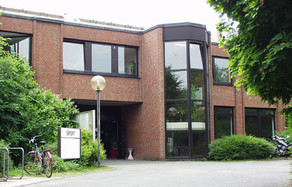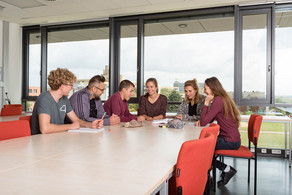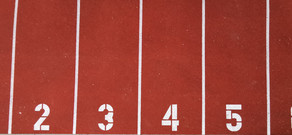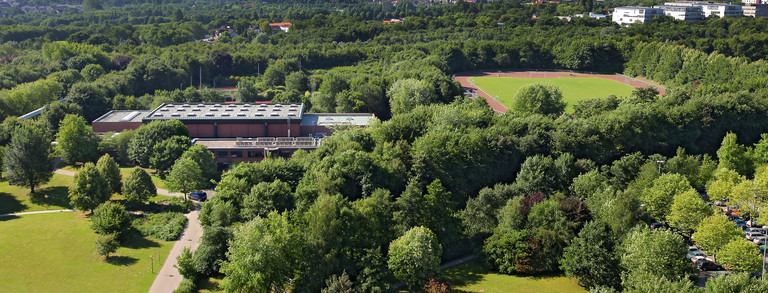Evaluation of the project "BAP 2.0 - Moving Care Facilities for the Elderly".
| Project Management: | Dr. Veronique Wolter |
| Staff members: | Jennifer Bruland, Miriam Dohle, Lisa Sobo, Tim Stahlschmidt, Cara Stemski, Jana Welter |
| Client: | Landessportbund NRW |
| Duration: | 01.04.2020 - 31.05.2022 |
Goals and contents
The holistic effects of regular physical activity in (old) age range from the prevention or risk reduction of the development of chronic diseases to the preservation of the ability to perform activities of daily living (functional capacity) and the improvement of well-being, quality of life and social network activity. The evidence base is being steadily updated internationally and increasingly including consideration of psychosocial 'outcomes' (Bauman et al., 2016). Continued participation in informal activities leads to increased life satisfaction and lower indications of social isolation, particularly among individuals who have previously had to leave their usual environment (e.g., by moving into assisted living) (Winstead et al., 2014). Thus, age itself is not per se a rationale for significantly limiting activities in nursing facilities, but rather general health status and, in particular, physical functioning. Although the concept of active aging has hardly been explored in long-term care, studies in this context also point to the central role of continued participation in health-promoting activities that primarily maintain (family) social contacts and functioning, thus counteracting deterioration in cognitive and physical health. Facilities are therefore encouraged to provide access and opportunities for participation (Fernandez-Mayoralas et al., 2015). Expert standards support the idea of integrating mobility-preserving and mobility-promoting measures into everyday care, which can be implemented through cooperation with sports clubs, for example, and anchored in quality management (DNQP, 2014). Knowing, however, that only 7% of the over-65s in Germany or 32.6% of those in need of care in this age group live in an inpatient care facility or other variants of assisted living, the importance of devoting attention to the residential neighborhood as a place of everyday living environments is simultaneously apparent. Here, the desire to remain in one's own home is the top priority for the majority of older people. In addition to the supply structures, social ties with the residents of the neighborhood play a role in the subjective evaluation of the living situation. Social relationships promote individual mobility, which can, however, be restricted at the same time by health status (BMFSFJ, 2016). Another important aspect are differences between different regions and their specific conditions, which should be taken into account when considering different types of services. Residents of rural regions, for example, seem to be more likely to meet the recommended activity levels if they are on the move or out and about in community settings, and immediate accessibility and access are subjectively perceived as suitable (Shores et al., 2009). In general, the reasons for older people's (non)participation in sporting activities are highly individual, but needs and motives are often found in overarching patterns and categories. The communication of possible potentials as well as the perception of positive effects of regular activity are as significant in the development of target group-specific physical activity offers as the establishment of suitable framework conditions for participation (Franco et al., 2015).
In addition to a review and summary of (inter)national literature relevant to the topic and the research of similar good practice examples (WP 1) at the beginning of the project, the scientific support primarily provides for a detailed analysis of the working methods, organization and cooperation of the involved actors from organized sports (sports clubs) and from care (inpatient and day-care facilities as well as outpatient care services) with regard to the implementation of group-oriented exercise offers (WP 2 and 3). In order to take as comprehensive a view as possible of all participants, the perspective of (potential) participants will be considered at the same time (WP 4). The 'end users' will be asked about their needs and motives in the context of their (non-)participation in physical activity/health promotion offers in their current living environment. On the basis of the inventory, existing strengths will be identified as well as optimization possibilities, which will be incorporated into the formulation of recommendations for action (WP 5). These recommendations for action are intended to facilitate the sustainable and successful implementation of physical activity offerings for people in need of care in various living environments. Overall, the scientific support throughout the research process is conceptual and advisory and accompanies the process throughout the course of the project.
Results
Wolter, V., Bruland, J., Dohle, M., Schramm, L., Stemski, C., & Welter, J. (2022). The BAP 2.0 project - Moving elderly facilities and care services 2.0. New physical activity offers for elderly people and people in need of care in inpatient and outpatient care services. Unpublished report.
Wolter, V. (2022). Impulses for the promotion of physical activity in the living environments of older people in need of care. The NRW project "Bewegende Alteneinrichtungen und Pflegedienste (BAP 2.0)". DVS-Expert*innenworkshop "Interdisziplinäre Präventionsarbeit in Pflegesettings - Gesunde Pflege braucht Bewegung!", 18.11.2022, Hamburg. Poster presentation.
Wolter, V., Dohle, M., & Sobo, L. (2021). Physical activities for older adults: Are local co-operations of sports clubs and care partners an option to increase access? German Journal of Exercise and Sport Research, 51(4), 468-473. DOI: 10.1007/s12662-021-00761-3.









